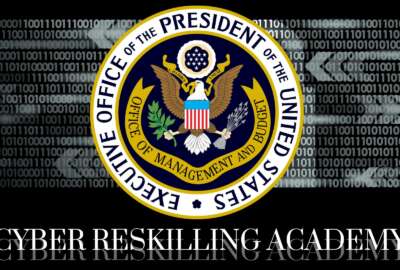

New analysis from Deloitte is shedding light on automation's potential for the federal workforce.
Automation and artificial intelligence have become buzz words within government over the last year, but the federal community still largely has more questions than answers about the potential they might bring to agencies and their workforces.
But new analysis from Deloitte fleshes out the possibilities for automation within the federal workforce with a little more detail — and illustrates the massive task that government would face in modernizing outdated job and classification systems if it invested heavily in artificial intelligence, robotic processing and other capabilities.
Depending on the investment, government has the potential to free up anywhere from 266 million hours to 1.1 billion hours a year that federal employees could spend doing other activities, Bill Eggers, executive director for Deloitte’s Center for Government Insights, said.
Federal employees spend about 4.3 billion hours a year doing a variety of tasks like documenting and recording information and monitoring and controlling resources, according to Office of Personnel Management and Labor Department data that Deloitte gathered.
But employees spend far less time coaching and developing others, maintaining relationships and other human-based activities, Eggers said. Four out of five of the most labor-intensive activities that federal workers perform have a medium or high automation potential, he said.
“Think about what you would do with your staff and your team,” Eggers said Nov. 29 at an 1105 Media event on customer service in Washington. “You could free up essentially a day a week from everyone’s time.”
Deloitte also envisioned a future where agencies have more than just federal employees and contractors to manage.
“It’s a two-dimensional workforce,” Eggers said of today’s environment. “The way we see this going forward is much more multi-dimensional.”
In the future, Eggers said he sees the potential for agencies to develop relationships with “ecosystem partners” or “gig workers,” professionals who collaborate and get paid for their work on a specific project.
The Office of Personnel Management has weighed in — to an extent — about automation’s potential for the federal workforce. OPM’s “Quadrennial Workforce Priorities” report, which the agency released back in spring, said automation wouldn’t completely take off all federal work activities at once.

Automating low-value work and reskilling federal jobs has certainly been a priority for the Trump administration and is detailed in the President’s Management Agenda.
Agencies themselves are taking steps in that direction. OPM has finalized a “reskilling playbook” for agencies. The National Science Foundation launched the “Career Compass Technology Challenge” earlier this year. NSF is looking for private sector ideas on a new tool that could help identify federal jobs for the future.
Though government is taking small steps, the private sector is moving more quickly.
“The thing I’m worried most about is that as the private sector is moving toward this whole new world of work very, very rapidly right now … the gap between that and government, where it’s just worried about work rules and job classifications, becomes so, so wide,” Eggers said. “All of those things need to be re-thought. A lot of the job classifications don’t make sense in a world where all of these jobs are going to change.”
Agencies even today are bumping up against the limits of a classification system established in 1949. Some agencies have said they’d like to bring on top talent to fill data scientist positions, for example, but can’t determine where in the existing classification system they should place them.
And Title 5 isn’t prepared to accept “gig workers” into the federal workforce.
Peter Warren, associate for performance and personnel management at OMB, said the Trump administration has been trying to pivot away from specific positions descriptions and General Schedule classifications and more toward the skills sets that would be valuable in government.
This is the approach the administration is taking as it reimagines the federal cybersecurity workforce, particularly at the Department of Homeland Security, he said. OPM also recently gave agencies direct-hire authority for certain cyber, IT and other STEM positions and announced plans to develop a new special occupational pay and classification system for certain jobs.
It’s administrative actions like these that have the greatest impact on the federal workforce in today’s environment, Warren said.
“We have put forward legislative proposals,” he said. “We will continue to, but we’re not going to miss the opportunity to make changes that we can under broad administrative authority.”
Copyright © 2024 Federal News Network. All rights reserved. This website is not intended for users located within the European Economic Area.
Nicole Ogrysko is a reporter for Federal News Network focusing on the federal workforce and federal pay and benefits.
Follow @nogryskoWFED

